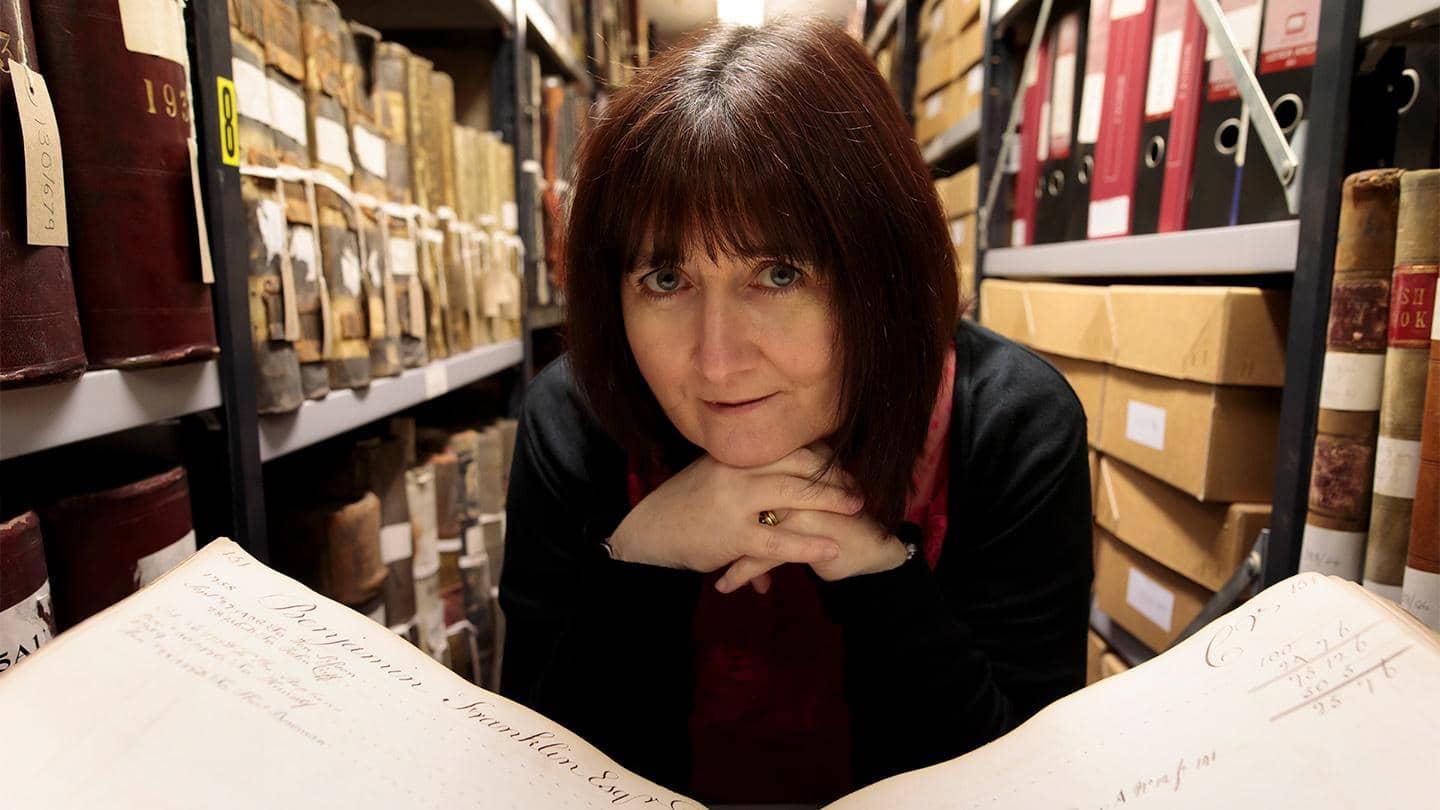
history
Feature: Group Archivist Maria Sienkiewicz
From vintage photography and handwritten ledgers to antique firearms and even a centuries-old lock of hair, Barclays’ Group Archive on the outskirts of Manchester tells the story of how the bank’s business has evolved around the world. Group Archivist Maria Sienkiewicz tells us why it’s important to “capture things now that will be needed in the future” – and picks her top festive finds from the vaults.
“I have loved history for as long as I can remember,” says Maria Sienkiewicz, Group Archivist at Barclays.
“I grew up in North Wales, surrounded by evidence of history. Near where we lived there was a castle which had been a stronghold of a native Welsh Prince before Wales was conquered by Edward I, an abbey which was dissolved by Henry VIII, and an amazing aqueduct built by Thomas Telford – so I’ve always been fascinated by how our lives and landscapes are impacted by things that happened in the past.”
A history degree was followed by a one-year graduate placement at Barclays Group Archives in Manchester – a role Maria describes as a “great start”. Having moved on to work in local government, she found herself headhunted to return to the bank. “The Archivist who’d given me my first job announced she was retiring and encouraged me to apply,” she explains. “I applied, and the rest is, literally, history.”
That was 15 years ago. Now working in a team of six based at the Barclays Group Archives in Manchester, UK, Maria is in charge of preserving and growing the bank’s story through a treasure trove of records ranging from the 16th century to the present day.
“The archives exist to protect and provide access to records which are being retained permanently for legal, business or historic reasons,” says Maria. “We need to make sure we’re capturing things now that will be needed in the future, particularly in telling us something about the organisation’s history and evolution.”
The Barclays Group Archivist says no two days are ever the same. As well as receiving enquiries from Barclays colleagues and members of the public every day, the team also field requests from researchers working on period dramas.
This idea that we are pioneers, that we are ambitious, is something that traces right through our history and should continue into our future
Barclays Group Archivist
“On the surface, you may think bank accounts are dull. But if you’re researching a person, finding a bank account can tell you a huge amount about them,” says Maria.
Teams from the BBC’s Poldark, Gentleman Jack and Back in Time for School have been among recent enquirers. “Back in Time for School did a feature on careers advice in the 1960s and we were able to provide them with a multitude of material produced by the bank at the time,” explains Maria. “It was especially interesting because, in those days, jobs for boys and girls were marketed very differently – so the literature does look quite strange to modern eyes.”
Another frequent enquirer is UK conservation charity The National Trust. “A lot of the aristocracy have had bank accounts with Barclays, and because The National Trust own a lot of the heritage houses built by those aristocrats, they access our records to track payments and find out information such as the dates that gardens were landscaped.
“When we’re not busy with enquiries, it’s great to spend time sorting through new arrivals – everything needs to be appraised to determine if we want to keep it. It’s then catalogued onto our database and packaged before being safely stored away in the strong rooms – which maintain a constant temperature and humidity.”
Pistols, muskets – and a 500-year-old lock of hair
What are the most unusual treasures in the archives? “We have 12 firearms in the archives including heavy pistols, big muskets and there’s even one with a bayonet,” says Maria. “They were brought in during the 18th and 19th centuries to protect the bank in case of trouble, but we don’t think they were ever used.
“We also have a lock of hair. It’s over 500 years old and probably the strangest thing we have in the archives. It’s reputed to have belonged to Sir Thomas Gresham who founded Martins Bank, which Barclays merged with in 1969. He was a hugely influential figure and has been referred to as the father of English banking.
“If someone offered me a lock of the Chief Executive’s hair, I wouldn’t keep it in the archives, but I like that it shows us how Martins Bank was really proud of its history.”
And with unlimited access to records spanning five centuries, what has been the highlight of Maria’s career?
“My job has taken me to all sorts of unexpected places over the years,” she says. “The one that really stands out is getting to work alongside mountaineer, Sir Chris Bonington, who led a Barclays-sponsored expedition up Mount Everest in 1975. Sponsoring the event was a risky venture for the bank, but it also got the Barclays name out there on the world stage.”
2015 marked 40 years since the expedition, and Maria was involved in organising a reunion of the climbing team. “It was a real privilege to be a part of that and meet these extraordinary men,” she says.
“This idea that we are pioneers, that we are ambitious, is something that traces right through our history and should continue into our future.”
Maria’s five festive finds from the archive
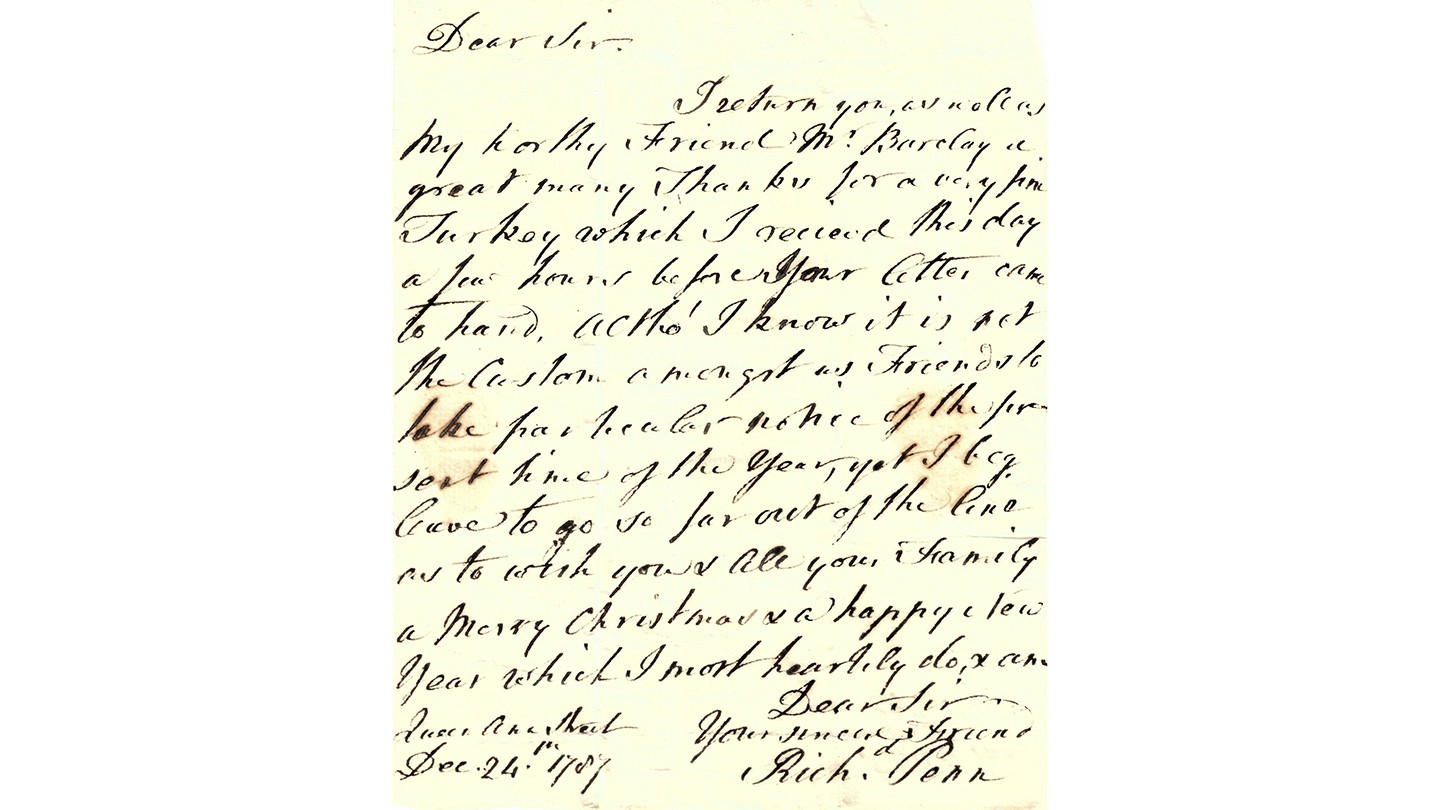
1) Christmas thank you letter, 1787
Written on Christmas Eve, this letter was sent by Richard Penn, grandson of William Penn, the founder of Pennsylvania, US, to Richard Gurney of Gurney’s Bank, which later merged with Barclays. In it, Penn thanks Gurney and his father-in-law, David Barclay, for the gift of a “very fine turkey”. As Quakers, the Penn, Gurney and Barclays families did not celebrate Christmas, but Penn writes: “I know it is not the custom amongst us Friends to take particular notice of the present time of the year, yet I beg leave to go so far out of the line as to wish you and all your family a Merry Christmas and a Happy New Year.”
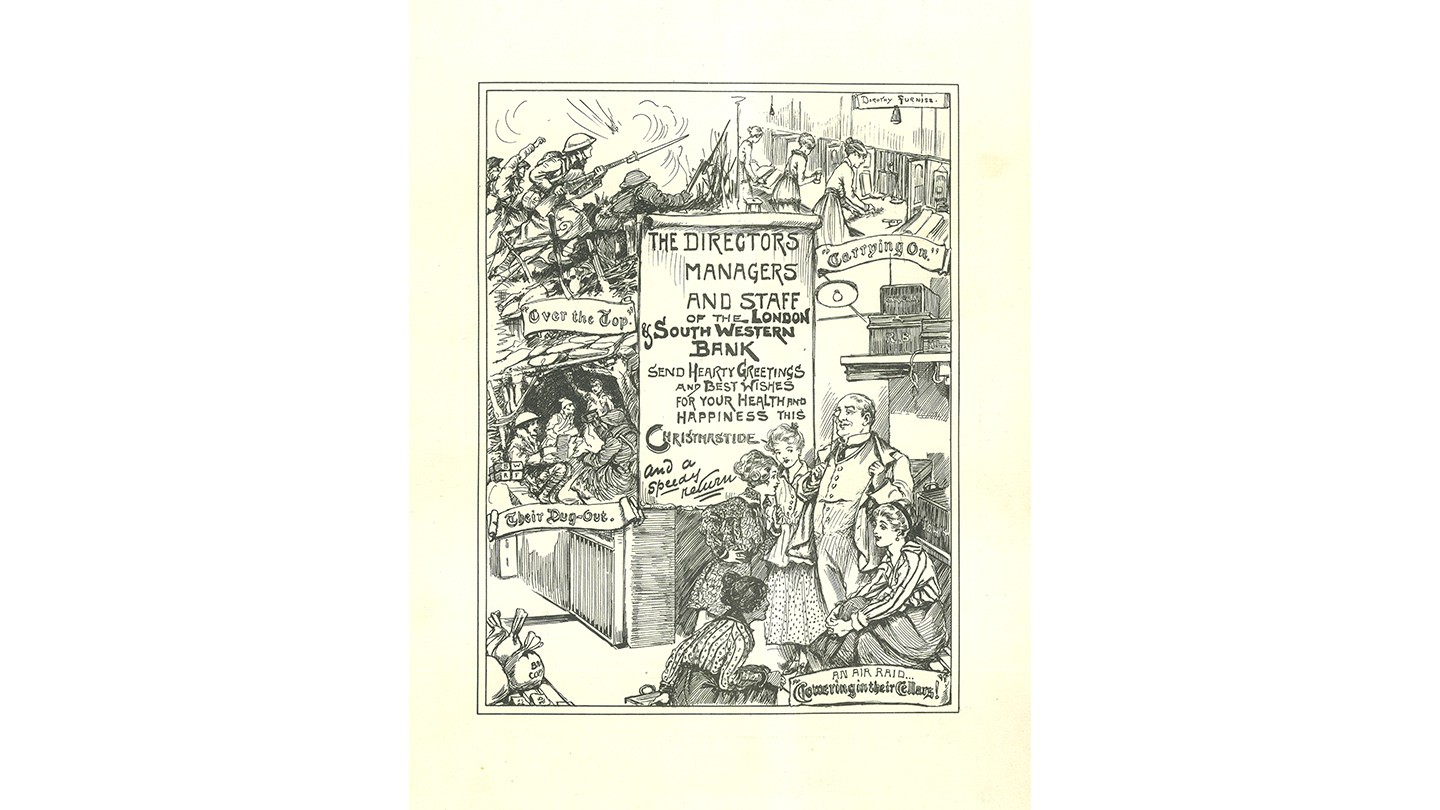
2) Card for First World War troops, 1915
This card was sent by the London and South Western bank to members of their staff serving in the armed forces during World War One. I love the illustrations, showing life on the front line and life back home, where women were doing the work previously carried out by men. This is one of many records we have which show how the banks continued to support their staff throughout the war.
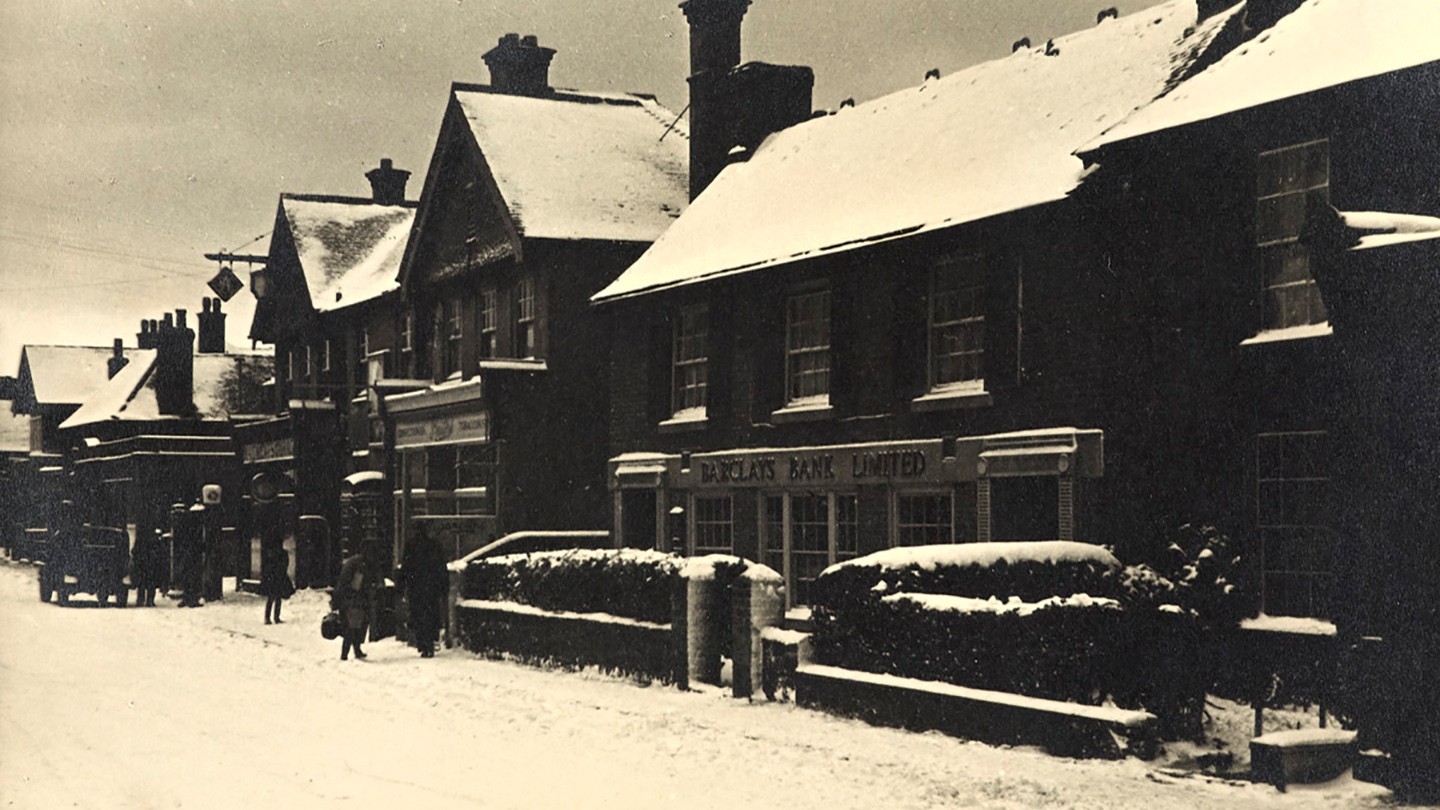
3) Selsey’s Barclays branch in the snow, 1930s
I recently found this photograph of Selsey’s Barclays branch in the snow and find it quite captivating! We have thousands of photos of our branches and I’ve never seen one with snow before – I guess the bank usually sent photographers out in reasonable weather.
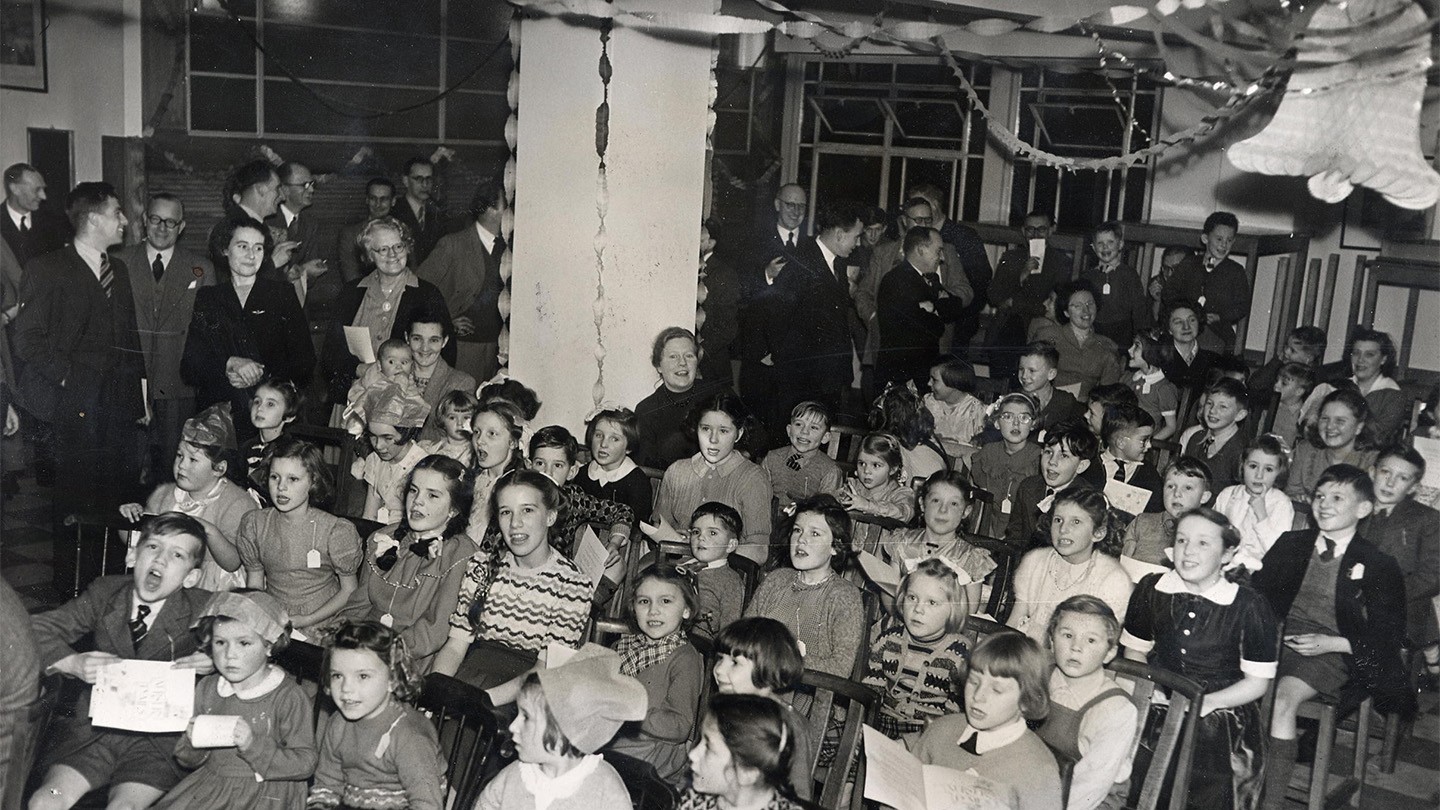
4) Woolwich Christmas party, 1950s
I love these photos of a children’s Christmas party organised by the Woolwich Building Society, which merged with Barclays in 2000. This is something that lots of large businesses used to do, and I think these photos really capture the essence of those times, and the excitement of the children.

5) Festive financial advice, 2011
This brochure was produced by the Citizen’s Advice Bureau in association with Barclaycard to help people manage their finances over the Christmas period. I love being able to add new material to the archives, and this is a great example of Barclays acting responsibly.